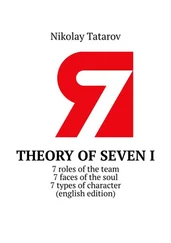During the early 19th century, when the restrictive influence of the Church began to wane and the members of the Romantic movement – in their quest for spontaneous expression – rediscovered the potential of dreams, a revival of interest in dream interpretation began. Popular dream dictionaries, such as Raphael’s Royal Book of Dreams (1830) trickled into the mainstream and set the stage for Freud and Jung, the two giants of dream interpretation whose theories continue to influence the way dreams are interpreted today.
The Revolution of Freud and Jung
Dreams are often most profound when they seem the most crazy.
– Sigmund Freud
Austrian psychoanalyst Sigmund Freud (1858–1939) opened the door to the scientific study of dreams with his book The Interpretation of Dreams (1900). At the time, when prudish attitudes were prevalent, he caused general outrage with his controversial theory that dreams are wish-fulfillment fantasies that have their origins in our infantile urges, and in particular our sexual desires.
Freud believed that the human mind is made up of the id (the primitive or unconscious mind), the ego (the conscious mind which regulates the id’s antisocial instincts with a self-defense mechanism), and the superego (which is the consciousness that in turn supervises and modifies the ego). According to Freud, the id is controlled by the pleasure principle (the urge to gratify its needs), and the instinct that the ego finds hardest to manage is the sexual drive first awakened in childhood. The id comes to prominence in dreams, when it expresses in symbolic language the urges repressed when we are awake. Symbols are used because if these drives were expressed literally, the ego would be shocked into waking up.
To interpret a dream successfully, the symbols need to be uncovered and their true meaning discovered. The way that Freud suggested doing this was a technique called ‘free association’, or spontaneously expressing the responses that immediately spring to mind when certain words relating to the dream are put forward. The aim is to limit interference from the ego to discover the dreamer’s unconscious instincts.
Swiss analytical psychologist Carl Gustav Jung (1875–1965), although an initial supporter of Freud’s ideas, could never fully agree with them. He felt there was far more to dreams than hidden sexual frustration, and put forward the theory of the ‘collective unconscious’: a storehouse of inherited patterns of experiences and instincts common to humans and expressed in dreams in universal symbols, which he called ‘archetypes’.
According to Jungian theory, the psyche is made up of the personal unconscious and the collective unconscious, and when a symbol appears in a dream it is important to decide whether it relates to us personally or is an archetype. The way Jung suggested we do this is by a technique called ‘direct association’, i.e. concentrating only on the dream symbol when you think about the qualities associated with it.
Jung speculated that the unconscious mind projected dream symbols in an attempt to bring the conscious and unconscious mind into a state of balance he called ‘individuation’. According to his theory, the only way the unconscious mind can express itself fully is in dreams, so it will flood our dreams with symbolic messages that reflect our current progress in waking life. These messages can bring comfort and guidance, or bring repressed urges to the fore, but their aim is the same – to encourage personal growth and self-development. However, before we can benefit from such intuitive wisdom, we first of all need to understand the language of symbols.
Other Important Dream Theorists
If you can dream and not make dreams your master …
– Rudyard Kipling
Austrian psychologist Alfred Adler (1870–1937) suggested that dreams are all about wish-fulfillment because they allow the dreamers to have skills and powers denied to them in waking life. According to Adler, ‘The purpose of dreams must be in the feelings they arouse.’
Gestalt psychologist Fritz Perls (1893–1970) believed that dreams project hidden aspects of our personalities and the best way to interpret them is to use a non-interpretative interviewing technique. In other words, you ask your dream character or object what they are trying to say. Then you try to adopt the dream’s mindset and answer the questions.
Noted Australian dream expert Gayle Delaney suggests using an interviewing technique that addresses questions such as ‘How did the dream make you feel?’ or ‘How can you connect your dream with your waking life?’ Some dream theorists believe dreams deal with problems we can’t solve in waking life and offer solutions. Looking at them in the light of waking day, and believing them to be full of insight, we may sometimes come up with new ideas or insights while studying and interpreting them.
Thanks to the work of Jung and Freud and other influential dream theorists, dream interpretation is now accessible to everyone. It’s more popular today than it has ever been, with people from all walks of life using their dreams as unique and personal sources of guidance and inspiration, or as tools for change, growth, and personal development.
Dreams can offer us profound insights into what is preoccupying us and, although they are likely to forever remain mysterious, interpreting them can be healing and empowering, help us understand ourselves better and shape the decisions we make in our waking lives. As we’ve seen, there are different approaches to the interpretation of dreams and you’ll find a fusion of all of these in this book.
Famous Dreamers
Through the centuries, the dreaming mind has been said to be the source of countless insights, revelations, and even history-changing guidance. Here are just a few well-known examples:
Julius Caesar attributed his decision to cross the Rubicon and march on Rome with his army to a dream, in which he saw himself lying in bed with his mother (his seers told him she represented Mother Rome). And his wife Calpurnia saw his assassination foretold in a dream.
St Francis of Assisi had a dream in which Jesus Christ spoke to him from the Cross, telling him to ‘set my house in order’, and so went on to found the Franciscan Order of friars.
Dante reported that the entire story of the Divine Comedy was revealed to him in a dream he had on Good Friday in 1300. When he died in 1321, some of the original manuscript was lost. His son Jacopo recovered the manuscript thanks to a dream in which his father showed him exactly where to look.
Genghis Khan is reported to have received his battle plans in dreams. It is also said that a dream told him he was ‘a chosen one’.
Samuel Taylor Coleridge wrote his famous poem ‘Kubla Khan’ after waking from an opium-fueled dream.
Robert Louis Stevenson was convinced his best stories, including the main device in Dr Jekyll and Mr Hyde , came to him in dreams. Suffering as a child from nightmares, he reportedly learned to control his dreams so he would no longer have nightmares. He said his dreams inspired all his writings.
Days before he was assassinated, Abraham Lincoln dreamed of loud wails coming from the East Wing of the White House. When he investigated, he was told by soldiers on guard that they were weeping for the President, who had been assassinated. Days later Lincoln’s body was laid in state in the East Wing so people could pay their last respects.
Friedrich August Kekulé von Stradonitz was a chemist working on the chemical structure of benzene. His data made no sense to him because benzene (we now know) does not behave like a ‘long string’ molecule. While dozing in a comfortable seat, Kekulé saw in a dream the image of a snake biting its own tail. He woke up and immediately understood the mathematics of the benzene molecule – which has a ring rather than a long-string structure.
Читать дальше
![Theresa Cheung The Dream Dictionary from A to Z [Revised edition] обложка книги](/books/618735/theresa-cheung-the-dream-dictionary-from-a-to-z-r-cover.webp)





![Theresa Cheung - The Dream Dictionary from A to Z [Revised edition] - The Ultimate A–Z to Interpret the Secrets of Your Dreams](/books/692092/theresa-cheung-the-dream-dictionary-from-a-to-z-r-thumb.webp)





